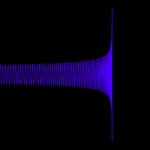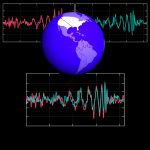Gravitational waves / Elementary tour part 2: Making waves
Such extreme situations include two orbiting neutron stars, or a neutron star orbiting a black hole, or even two black holes orbiting one another. Such objects (which will be described further in the following chapter, Black holes & Co.) are extremely compact (i.e. for objects of their mass, they are of extremely small size). It is this compactness that makes these binaries excellent sources for strong gravitational waves.
Before gravitational waves have been measured directly for the first time in 2015, there was already strong indirect evidence. The smoking gun was a system of orbiting neutron stars with the catchy name PSR1913+16. Einstein’s theory predicts that gravitational waves carry away energy. For a system of orbiting stars, such a decrease in total energy leads to an ever faster and closer orbit. Over decades, radio astronomers have monitored the time that it takes the stars of PSR1913+16 to complete each successive orbit, and lo and behold: this orbital period decreases over time exactly as predicted by general relativity. This is strong evidence that the speed-up is indeed due to the radiation of gravitational waves, and the reason Russell Hulse and Joseph Taylor were awarded the Nobel prize for physics for the year 1993.
With orbiting objects drawing nearer and nearer (as in the case of PSR1913+16), the end is inevitable: There will be a collision, and if neutron stars or black hole collide, a huge amount of energy is radiated away in the form of gravitational waves. The following simulation by scientists of the Max-Planck-Institute for Gravitational Physics shows the spatial distortions effected by these waves as expanding, coloured regions. In this example, the collision and merger involves two black holes.
Supernovae (violent explosions of dying stars, in which huge amounts of energy are freed and huge amounts of matter ejected into space) are also promising gravitational wave sources.









